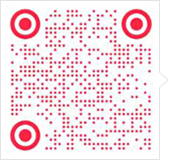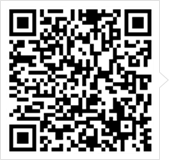
http://chongqing.hteacher.net 2021-12-03 15:39 重庆教师招聘 [您的教师考试网]

A
It takes years of school to develop math skills, but learning about numbers starts earlier than you might think. Now according to a new study, at three months, babies have already started acquiring a concept of “how much”.
Previous research had suggested that very young babies can tell when the number of objects in a group has changed. But the babies in these studies were simply reacting generally to the fact that something had changed, they suspected.
Researchers of Harvard University studied 36 babies, all three months old. During the tests, each baby wore a hat with sensors (传感器). The babies watched a series of images on a computer screen. They showed the same object, such as a cartoon character. For a while, the number of the objects in the pictures didn’t change. Then the images began to display a different object, or a different number of one of the objects the babies had previously looked at. As soon as something changed, the babies’ brains responded with a specific pattern of electrical signals, which would be recorded by sensors.
By analyzing these signals, the researchers discovered that one part of the brain (near the top on the left side) responded when the object in the image changed. A different part of the brain (lower and on the right side) responded when the number of objects in the image changed. This was not the area of the brain that is involved in attention. That suggests that the babies’ brains are doing more than just reacting to a change in what they’re seeing — they actually seem to be able to tell number changes from other types of changes.
Numbers and amounts are important concepts in our lives. Even though babies are years away from adding, subtracting, multiplying, and dividing, their brains seem to be preparing for a time when they finally will.
1. Why were hats with sensors used in the study?
A. To record the images on the computer screen.
B. To remind babies of the changes of numbers.
C. To record the electrical activity of each baby’s brain.
D. To help babies concentrate on the computer screen.
2. What does the underlined word “They” in the third paragraph refer to?
A. Babies involved in the study.
B. Sensors worn by the babies.
C. Numbers marked on the objects.
D. Images shown on the computer screen.
3. Which part of the brain is responsible for responding to the changes of numbers?
A. The top. B. The left side.
C. The lower and the right side. D. The upper and the left side.
4. The last paragraph mainly implies that _____.
A. babies are in fact cleverer than they are thought
B. it is impossible to understand human brain completely
C. numbers play the most important part in people’s lives
D. the ability of babies remain a mystery to scientists
5. The purpose of the study is to prove that _____.
A. math skills should be developed as early as possible
B. numbers are easier for babies to judge than images
C. babies really do have some sense of numbers
D. babies can react differently to what they see
文章是通过研究告诉大家很小的孩子就有数字的感觉。
1.【答案】C。解析:考查细节理解题。根据第三段最后2行the babies’ brains responded with a specific pattern of electrical signals, which would be recorded by sensors.故选C。
2.【答案】D。解析:考查猜测词义题。根据上文的The babies watched a series of images on a computer screen.可知they是指a series of images。
3.【答案】C。解析:考查细节理解题。根据第四段第二行A different part of the brain (lower and on the right side) responded when the number of objects in the image changed.
4.【答案】A。解析:考查推理题。根据最后一段的Even though babies are years away from adding, subtracting, multiplying, and dividing, their brains seem to be preparing for a time when they finally will.可知A正确。
5.【答案】C。解析:考查总结归纳题。本文就是为了告诉大家很小的孩子就有数字的感觉。故选C。
B
As your charming child changes into a rebellious teenager, take a deep breath and have a good look at the situation before you throw up your arms in anger or distress. Your teen takes a vital step towards adulthood by way of fighting against your rules, regulations and attitudes. Moving beyond their previous dependence on parents, teachers and other adults, teens learn to make decisions, understand the consequences of their behavior and get ready to take on adult responsibilities.
The growing need for independence sits at the heart of teenage rebellion. Many teens prefer to use peers as role models and often begin to question the reasoning behind home and school boundaries as they step closer to adulthood. The physical changes involved in adolescence coincide with(与…相一致) emotional, intellectual and moral growth, points out Kids Health---all of these can affect teenagers strongly and leave them feeling at a loss and stressed. They test different types of behavior, and it’s through this testing and boundary pushing that they learn what works and what does not from their own successes and mistakes.
Changes to a teenager’s hair and clothing emphasize her growing independent tastes and highlight her inclusion in a group of friends. Her opinions may begin to differ from yours as she develops her own values, leading to potential conflicts on subjects ranging from television programs to world affairs. A teen may break family rules regarding chores, loud music and schoolwork and find herself facing unwelcome punishment as a result. These acts of rebellion normally occur from time to time rather than continuously. They give teenagers the chance to see the results of their decisions for themselves and learn when rebellion may be a mistake.
Unhealthy patterns of rebellion can include acts of rebellion that increase in frequency. Violent bursts of anger, physically and emotional destructive behavior and offensive language may indicate that your teen feels bitter hatred towards adults and authority and needs help in navigating those feelings. Watch for falling grades, frequent truancy(逃学) from school or sudden changes to friendship, as these could indicate a variety of problems, including drug, alcohol or tobacco abuse.
1. A rebellious teenager has the following characteristics EXCEPT _____.
A. dependence on parents B. disobeying rules and regulations
C. making his own decisions D. preparing to undertake adult duties
2. According to Paragraph 2, we can learn that during adolescence teenagers _____.
A. want to learn from the older generation
B. remain unchanged
C. are under pressure and feel confused
D. need to be told what to do
3. The underlined phrase “inclusion in” in Paragraph 3 is closest in meaning to _____.
A. fitting in B. separating from
C. competing in D. fighting for
4. In the last paragraph, parents are advised _____.
A. to leave them alone when their teens behave badly
B. to neglect their teens’ possible unfavorable experiences
C. to blame their teens for no reason
D. to provide their rebellious teens with proper guidance
5. What’s the best title for the passage?
A. Teenage Problems B. Rebellion against Parents
C. Generation Gap D. Teenage Rebellion
【解析】本文讲述如何判断和对待处于叛逆期的孩子。
1.【答案】A。解析:考查推断题。根据第一段提到Your teen takes a vital step towards adulthood by way of fighting against your rules, regulations and attitudes. Moving beyond their previous dependence on parents, teachers and other adults, teens learn to make decisions, understand the consequences of their behavior and get ready to take on adult responsibilities.你的孩子会与父母对抗,不遵守规则,不信赖父母,学会自己做决定,准备承担责任,故A项没有提到。
2.【答案】C。解析:考查细节理解题。根据第二段提到all of these can affect teenagers strongly and leave them feeling at a loss and stressed所有的这些都会影响到他们,让他们感到困惑和有压力,故选C项。
3.【答案】A。解析:考查词意猜测。根据第三段提到Changes to a teenager’s hair and clothing emphasize her growing independent tastes and highlight her inclusion in a group of friends. Her opinions may begin to differ from yours as she develops her own values, leading to potential conflicts on subjects ranging from television programs to world affairs他头发和衣着的改变强调他的独立和强调她能适应新的朋友,他的意见不同于你,她开始形成自己的价值观,导致潜在的矛盾,故选A项。
4.【答案】D。解析:考查推断题。根据最后一段提到Violent bursts of anger, physically and emotional destructive behavior and offensive language may indicate that your teen feels bitter hatred towards adults and authority and needs help in navigating those feelings情绪的突发,激烈的语言行为表示你的孩子对成年人感到厌烦,需要对于这种负面情绪的指导,故选D项。
5.【答案】D。解析:考查主旨大意。本文讲述如何判断和对待处于叛逆期的孩子,故选D项。

推荐阅读:
责任编辑:马嘉悦

上一篇: 重庆教师招聘之《初中音乐》考试习题
公众号

视频号

小红书

小程序

APP

京ICP备16044424号-2京公网安备 11010802023064号 Copyright © 2001-2024 hteacher.net 北京中师华图文化发展有限公司 版权所有